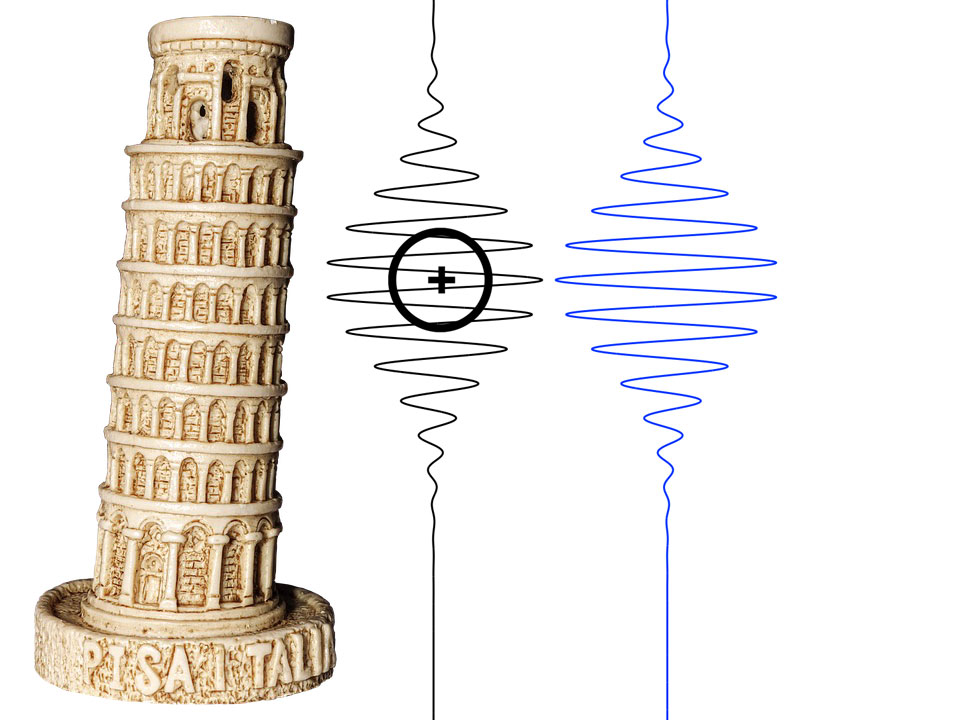[“Quantum foundations” series – QFT charge inversion]

As discussed elsewhere (e.g., in “QFT – How many fields are there?” and comments), in the Standard Model, “there is one field for each kind of particle.”
So, consider the positron – the “negative-energy solution” of the Dirac equation.
It’s likely that electrons and positrons (anti-electrons) are localized vibrations (excitations) in the same field. Just “reverse” excitations. For example, as noted by Ethan Siegel as “equal-and-opposite excitations of a quantum field.” (Cf. Don Lincoln’s QFT visualizations.)
While electrons and positrons can be separated using magnets, if all fundamental particles are “identical” wavepackets (cf. John Archibald Wheeler’s quip that “they [electrons] are all the same electron”), why would electrons and positrons interact differently in a gravitational field – to spacetime geometry? If geometry is geometry … on identical “mass” energy packets [1]. (Imagine a classroom physics demonstration in which electron and positron “balls” accelerate differently down an inclined plane, eh.)
Perhaps due to different wavepacket topologies? Or interactions with the quantum vacuum? [2]
Or some new physics? (Cf. “Beyond the Standard Model – sliver of reality?“)
Well, some physicists are checking, i.e., testing CPT symmetry. This article starts with an illustration of dropping objects from the Leaning Tower of Pisa.
But this experiment does not confirm that hyddrogen and antihydrogen atoms “fall” at the same rate.
“This is the first Leaning Tower of Pisa experiment with antimatter [magnetically trapped antihydrogen atoms],” says Tim Tharp, an associate professor at Marquette University, referring to Galileo’s fabled experiment dropping objects from the leaning tower to compare their rates of acceleration.
• Symmetry Magazine > “Antimatter falls down” by Sarah Charley (September 27, 2023) – Results from the ALPHA experiment (the Antimatter Factory at CERN) confirm that matter and antimatter react to gravity in a similar way.
Antimatter is identical to matter, except that some of its properties are flipped. For instance, electrons are negatively charged, but their antimatter counterparts, positrons, are positively charged.
Thus far, matter and antimatter seem to be either equal or mirror images of each other in all areas. “Antimatter is a very specific reflection of matter,” Tharp says. “Some things are the opposite, and some things are the same.”
But one area that hadn’t been fully investigated is how antimatter interacts with gravity.
“We don’t know everything there is to know about gravity,” Tharp says. “We have this image that gravity warps spacetime. If antimatter fell the opposite way, that picture wouldn’t fit anymore. These results are a new, substantial piece.”
Even though ALPHA has shown that antimatter falls down, the precision is too low to know if antimatter and matter experience gravity with the same strength.
Notes
[1] Interact the same with the Higgs field.
[2] Or a possible twist? Wilczek noted that: “We have quantum fields that create left-handed particles, and separate quantum fields that create right-handed particles.” So, left / right handed electrons and positrons …

Antigravity?
Regarding a “force-less” physics and the notion of gravitational “charge,” if gravity really is about spacetime geometry (topology), is an “anti” (repulsive) geometry possible?
I really can’t visualize 4D (or higher) geometry anyway.
And anti-matter (as noted in this post) is not the answer.
Bring on the fluid dynamics analogies …
[Image: “the [2D] bowling ball on a bedsheet” analogy – a “down” gravity well.]
[Animation: A better analaogy – space [spacetime] as a three-dimensional grid. … where all the lines are mutually perpendicular in all three dimensions, … a grid where lines get “sucked” inward by the presence of masses.]
• Big Think > “Ask Ethan: Why is there no antigravity?” by Ethan Siegel (December 1, 2023) – You might imagine that spacetime could “curve” in an “anti” fashion, resulting in antigravity; but …